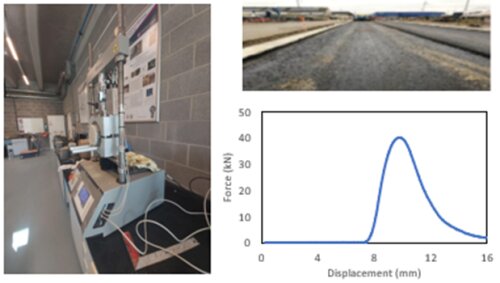We're very sorry, at the moment we have no exchange opportunities available for master students in the domain of materials. Do you want to be kept up to date, please send an email to supar@uantwerpen.be.
Shear resitance between the interface of pavement layers
Asphalt pavements are constructed in a multi-layered system. Pavement layers are normally bonded with adhesive materials named prime coat and tack coat. The prime coat and tack coat provide an integrated structure for better transferring the stress of traffic loading and changes in environmental conditions to the next layers. Bonding between pavement layers has a significant influence on pavement response in terms of stresses and strains induced by traffic loading. The absence or/and inadequacy of the bonding layer results in a significant reduction in the pavement structure shear resistance which results in a higher rate of cracking, potholes, raveling, rutting, deformations, and bulging. Another distress caused by the de-bonding of the pavement layers is slippage which mostly occurs in summer due to higher temperatures and lower shear resistance of the bonding agent. Such failure can significantly reduce ride comfort and road safety. It is known that excessive or/and shortage in tack coats may promote shear slippage and failure at the interface. This study aims to achieve an adequate level of interlayer bonding by comparing the type of adhesive layer materials and their application rates.
The main objectives of this research are to first select the most appropriate material for application under Belgium's environmental conditions and second optimize their application rates for different layers. The outcomes will be then compared with data obtained from constructed test tracks in Antwerp. This project can benefit students understand the importance of pavement layers and their interaction through their interface. Students will learn how to duplicate and simulate environmental conditions. They will also be familiarized with different software to analyze pavement performance.

Contact: Reza Seyed Omranian